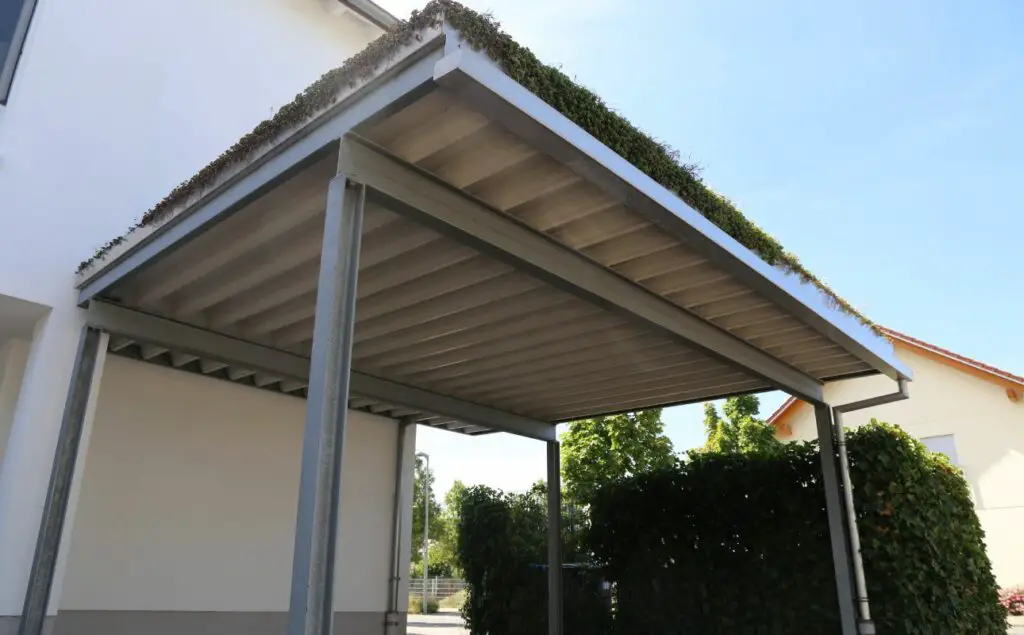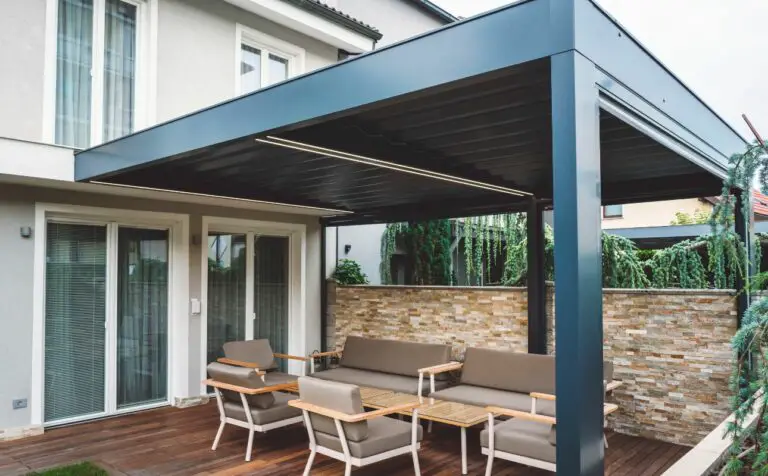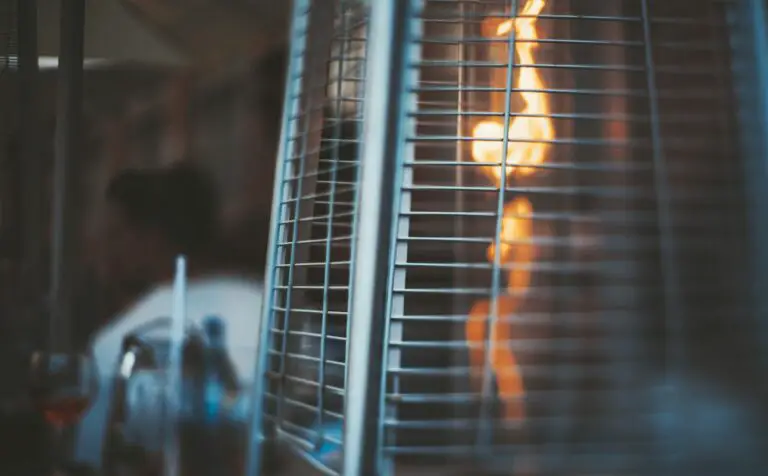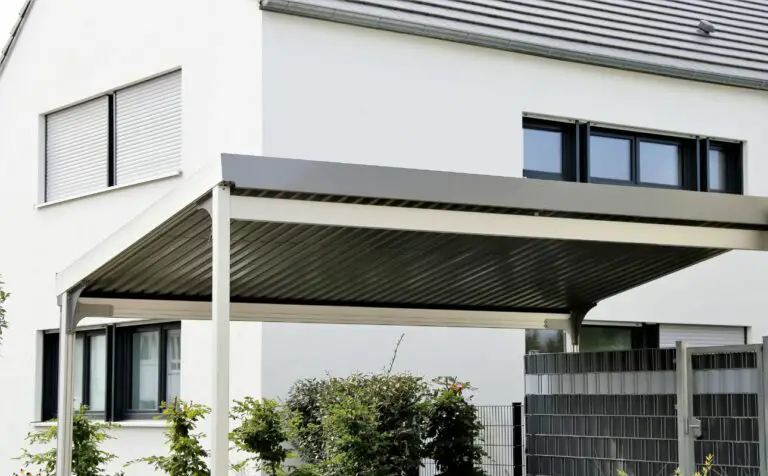When we think about our carports, we often consider their primary function of protecting our vehicles from the elements. However, many carport owners have encountered a perplexing issue their carport “sweating,” or exhibiting condensation on its undersurface.
This phenomenon, which can lead to dripping water, is not only baffling but could also potentially cause issues such as rust, mold, and water damage.
In the following discussion, we will delve into the science behind why your carport might be sweating, the potential problems it can cause, and the steps you can take to mitigate this issue.

Understanding Carport Sweat
When it’s warm, the air can hold more water. During the day, the air under the garage can get warmer, especially if it has walls on at least one side. When it gets cooler at night, the metal roof of the garage cools down faster than the air below it.
When the warmer, more humid air hits the cooler surface of the carport, it can’t hold as much water, so it drips down the bottom of the roof.
It’s important to know that carport sweat isn’t a problem or a sign that your carport is broken. It’s a normal thing that happens when the temperature and humidity change.
But if you don’t fix it, it could cause problems over time, like rusting of the metal parts of the carport or water damage to things kept under the carport if the water drips on them. The moisture then condenses on colder surfaces such as metal roofs and walls, resulting in dripping water or even mold growth.
Poor Ventilation
Poor ventilation can contribute to carport sweat by trapping moisture and preventing air circulation, resulting in condensation on surfaces. This can cause damage to the structure over time and create an environment that promotes mold growth.
Solutions to improve ventilation include installing vents or fans to increase airflow, sealing any gaps or openings where moisture could enter, and maintaining proper humidity levels through dehumidifiers or air conditioning.
How It Contributes to Carport Sweat
Inadequate ventilation exacerbates this issue since it allows for stagnant air to accumulate moisture without any means of escape. As such, carport insulation is crucial to preventing condensation by keeping the interior surfaces warmer and preventing them from reaching dew point temperatures.
There are several insulation options available in the market including fiberglass batts, spray foam insulation, and reflective foil bubble wrap among others that can be installed on walls or ceilings depending on your budget and preferences.
While these materials may help reduce heat loss during winter months, proper ventilation remains essential at all times to prevent moisture build-up that can lead to mold growth or structural damage over time.
Solutions to Improve Ventilation
Improving ventilation is a key solution to preventing moisture build-up and maintaining a dry and comfortable carport environment, and this section will explore various means of achieving optimal airflow.
To improve ventilation in your carport, consider the following solutions:
- Installing fans can help circulate air and reduce humidity levels within the space.
- Sealing gaps around doors and windows can also help prevent moisture from entering the area.
- Adding vents or louvers to the roof or walls of the carport can increase airflow and further prevent moisture accumulation.
- Using a dehumidifier can be effective in removing excess moisture from the air when ventilation alone is not sufficient.
- Utilizing natural methods such as opening windows during dry weather conditions or planting vegetation that absorbs excess moisture can also aid in improving ventilation.
With proper ventilation established, we can now move onto addressing high humidity levels within our carports to further enhance our efforts towards maintaining a dry environment for our vehicles.
High Humidity Levels
One way to achieve this is through ventilation, which allows for adequate air circulation and reduces the chances of moisture accumulation. Additionally, using dehumidifiers or air conditioners can help regulate indoor humidity levels.
Moisture prevention methods such as waterproofing and insulation can also be beneficial in reducing condensation formation. By controlling humidity levels in the carport, homeowners can prevent issues such as mold growth and structural damage caused by excessive moisture buildup.
Roofing Material
Metal roofs are particularly susceptible to this issue due to their high thermal conductivity and low insulation value. As an alternative, homeowners may consider using roofing materials with higher insulation values such as shingles or tiles to prevent sweating and improve energy efficiency.
Types of Roofing Materials that Contribute to Carport Sweat
Various types of roofing materials used in carports, such as metal and asphalt shingles, are known to contribute to the phenomenon of condensation, which can lead to water accumulation and dripping.
This is because certain materials have a higher thermal conductivity, causing them to absorb heat from the sun during the day and release it at night. As a result, when warm air inside the carport comes into contact with the cold surface of the roof, it cools and releases moisture in the form of condensation.
To prevent this issue, it’s important to consider roofing material options that offer better moisture control techniques. For instance:
- PVC roofing: This type of material has excellent waterproofing properties that can prevent moisture from seeping through.
- EPDM roofing: Made from synthetic rubber compounds, EPDM roofs are highly resistant to extreme temperatures and UV rays.
- Green roofs: These eco-friendly roofs feature a layer of vegetation that helps regulate temperature and reduce runoff.
Alternative Materials to Consider
Eco-friendly options such as green roofs, solar panels, or recycled rubber roofing can provide an innovative solution to the problem of carport sweat. These materials help reduce heat transfer and improve ventilation while providing a more sustainable option for homeowners.
Durability comparison shows that some of these alternatives may last longer than traditional roofing materials like asphalt shingles or metal roofing. However, it’s important to consult with a professional roofer before making any decisions about which material to choose based on specific needs and budget constraints.
With proper installation and maintenance, these alternative options can significantly reduce the amount of moisture buildup in your carport roof.
How to Stop Carport from Sweating?
Preventing carport sweat or condensation largely revolves around controlling the temperature and humidity levels within the carport structure. Here are some strategies you could consider:
Ventilation
Improving ventilation is perhaps the most effective way to combat carport sweat. By allowing the warm, moist air to escape, you’re reducing the chance for it to condense on the cooler surfaces of the carport. This might involve installing vents, fans, or even just leaving one side of the carport open to allow for better airflow.
Insulation
Installing insulation on the underside of the carport roof can help to balance the temperature difference between the air and the carport roof, reducing condensation. This might involve using foam board or spray foam insulation.
DripStop or Anti-condensation Linings
These are special materials designed to absorb moisture when it condenses and then release it back into the air when conditions are less humid. They can be installed on the underside of metal roofs to help control condensation.
Dehumidifiers
In extremely humid climates or situations, using a dehumidifier can help to reduce the amount of moisture in the air and thereby decrease the likelihood of condensation.
Roof Coatings
Some special coatings can help to prevent condensation by creating a barrier between the cool metal roof and the warm, humid air.
Weather Consideration
If you are planning to build a new carport, consider the typical weather and temperature conditions in your area. A design that suits your local climate can help prevent issues like carport sweat.
The Bottom Line
Preventing carport sweat requires a combination of proper ventilation, maintaining low humidity levels through dehumidifiers or air conditioning units installed inside the garage if necessary and choosing suitable roofing materials that minimize condensation buildup.
An example of an acronym used earlier was HVAC (heating ventilation and air conditioning) which helps maintain indoor environmental comfort by regulating temperature and air quality. Addressing these issues early on will save homeowners time and money in costly repairs from potential water damage caused by excessive sweating in their garages or sheds.





